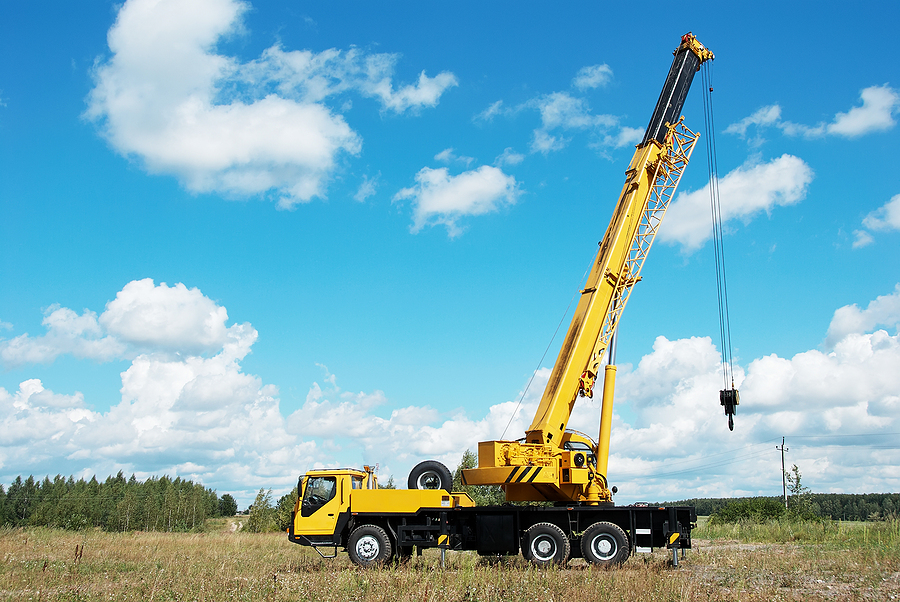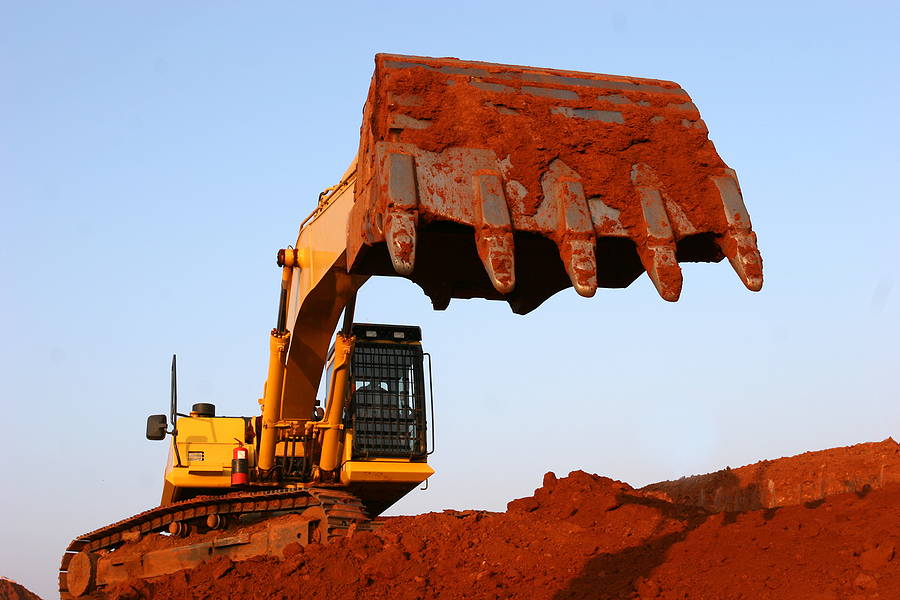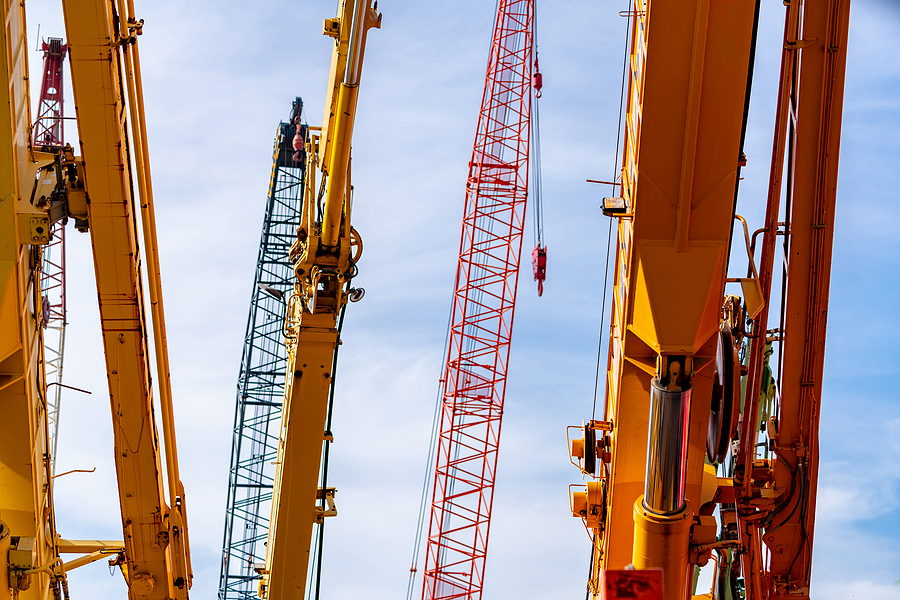When Cranes Became Mobile
Cranes are among the earliest tools ever made, and one of the construction machines that has evolved the most across the entire span of human history, changing in purpose and capability from an irrigation device to the tool that enables buildings to reach the heavens.
Depending on whether you define the crane as specifically a lifting tool as it would be used in crane hire today or whether the lever principle is sufficient, the crane is one of the earliest pieces of technology ever constructed, with the shadouf being used over 5000 years ago.
This formed the basis for the Trispastos, the three-pulley crane that was developed by the Ancient Greeks as a lifting device to allow heavy stones to be lifted above the heads of construction workers and change construction forever away from ramps and heavy stones to many smaller stones.
From there, the development of the crane became one of improved technology, building materials and power, with the treadwheel crane being the primary tool for lifting until the development of hydraulic cranes in the 19th century.
However, one common trend with the use of cranes is that they remained stationary for much of human history, with the first step of a construction project involving building the primary tool that will allow the building to commence.
This would only begin to change in the latter part of the 19th Century.
From The Rail To The Road
Cranes needed to be fixed to a certain location before they could be used, but there were attempts to make cranes more mobile that did not require much extra development.
The development of the railway meant that larger, heavier pieces of equipment did not necessarily need to remain entirely static. Flatcars, typically used to carry longer, more awkward pieces of cargo, could also be used to carry cranes.
This allowed for the rapid deployment of the new hydraulic, steam-powered cranes, which whilst primarily used to get stricken locomotives back on the rails, could also be used for construction, especially in industrial estates and docks where construction projects were near the rails.
The biggest developer of mobile cranes was Appleby Brothers, a machinery firm started by Charles and Thomas Appleby in 1858.
Less than a decade later, they had showcased a mobile steam crane platform that by the 1890s would become standard on the railways. Some of the cranes developed by 1910 were so powerful and useful they would remain in service for over 70 years.
After the death of the pair, Appleby Corp., managed by Henry Coles, started to produce cranes that were mounted onto petrol-electric homes, with others following suit not long after. Soon after this, Coles Cranes were acquired by Steel and Co. of Sunderland in 1939, ending this period of innovation.
However, Hiab, short for Hydauliska Industri AB, a Swedish company that was primarily known for manufacturing skis up until 1944, found an efficient way in 1947 to use a truck’s petrol engine (as opposed to a separate generator) to power a hydraulic crane, creating the first truck-mounted crane of its type.
This was the genesis of the modern mobile crane, with the main advancements coming in the form of additional telescopic booms to increase height and usability and the adoption of four-wheel-drive to enable versatile military use of mobile cranes.
Read moreCLC Warns Of Testing Capacity Fears For UKCA Mark
The Construction Leadership Council (CLC) has warned the UK has insufficient testing capacity to ensure certain manufacturers can legally sell goods in the country from 2023 under new post-Brexit requirements.
According to the Financial Times, the CLC believes that without a rethink of the existing policy, manufacturers of products such as radiators may be unable to sell goods legally in the UK once the existing CE mark is no longer recognised in the UK from the end of next year.
The council has written to several senior government ministers arguing that there is a severe shortage of capacity in the UK to meet the demand for testing of construction products needed for them to obtain the new ‘UKCA’ Mark.
The UKCA mark will become mandatory for goods such as building and engineering equipment sold in the UK and is scheduled to be introduced in 2022 to replace the CE mark that is currently used across the EU and the UK to demonstrate products that comply with safety standards.
The government, however, has confirmed that the CE mark will continue to be recognised until 2023, due to concerns raised by several industry bodies.
But even with the delayed introductions, the CLC has stated in the open letter to ministers that not enough has been done to make sure that there are sufficient testing sites and locations across the country to achieve UKCA by 2023.
“There must be a significant expansion of facilities with the incumbent recruiting and training of staff, who must all then receive authorisation by UKAS before more products can be put through the new process. Unfortunately, this expansion of capacity is not happening quickly enough,” the letter said.
The council added that measures such as the use of subcontractors and overseas testing, or providing more flexibility to use the EU’s CE safety mark could be used to ease the transition to new UK-specific marking.
The open letter is addressed to both Business Secretary Kwasi Kwarteng and Michael Gove, Secretary of State for Housing, Communities and Local Government.
The CLC added that evidence gathered from UK construction manufacturers over the past 12 months has highlighted that many common products such as radiators, sealant, and passive fire protections are at risk due to a lack of testing capacity, and said that if the situation prevails, these products, and others, will not be on the market in the UK after the January 2023 deadline.
The council’s letter stated, “The inability to certify radiators in the UK, for instance, could delay the construction of over 150,000 homes in a single year and will also delay the switch to low carbon heating.”
It said that consequences of such are not only damaging to the UK construction sector, but also the government’s housebuilding, infrastructure, building safety, and net-zero ambitions.
The CLC argued that several market failures had led to concerns within the construction sector about testing capacity.
These failures include the relatively small scale of UK construction products testing in the UK, the business impacts of the ongoing COVID-19 pandemic, as well as the limited timelines for the industry to move from the EU CE Mark to the new UK-specific designation.
If you’re looking for plant hire in Hull, talk to us today.
Read more
Fascinating Facts About Cranes
Cranes are an inherently fascinating piece of equipment that due to centuries of reliable use is often taken for granted.
When people choose a crane hire, they are choosing a relatively light piece of equipment that can carry considerable loads very high into the air, with some of the biggest cranes in the world being the size of skyscrapers.
Because of this rich history, they have also built up a legacy over the years filled with fascinating facts about their construction, innovation, uses and even the people at the controls.
Here are just some of the most fascinating facts about cranes.
The Earliest Crane Was Used For Irrigation
The earliest known lifting cranes were used in Ancient Greece around 500 BC, according to archaeological evidence and relatively contemporary recordings of architecture.
However, thousands of years before this, the same lifting principle was used in the ancient irrigation tool known as the shaduf. It used the same system of a counterweight, a pivot and a pole, and it was used to lift water from a river or lake.
Whilst it has since been superseded by wells and more elaborate waterways and aqueducts in most of the world, it is still used in some rural areas.
When Cranes Make Magic
Because cranes are so versatile, they have been used in a lot of film and television productions but became the star of one of the most infamous stunts in televised history.
David Blaine, a street magician who had become famous for an increasingly elaborate set of endurance stunts, including being buried alive, stood in a block of ice and stood on a 30m pillar for hours.
His most infamous stunt, however, was Above the Below, where Mr Blaine was suspended 30 feet in the air via a crane in a transparent plexiglass case where he would spend 44 days with water but no food.
He lost nearly 25kg of his body weight during the stunt and suffered a range of complications during the complex refeeding process after being hospitalised.
A Crane Operator Lifts The People
A lot of famous people have worked as crane operators, including former British Member of Parliament Frank Marsden. Arguably, however, the most famous crane operator was a hard-working Polish woman who became the catalyst for one of the largest strikes in history.
In then-Communist Poland Anna Walentynowicz became known as a ‘Hero of Socialist Labour’ for her hard work but had quickly become disillusioned with the corruption and injustice she found, quickly falling foul of the Polish Secret Police for her open activism for a free trade union.
In 1980, five months before she was set to retire at 51, she was fired and became the symbol of a worker’s strike that included over a million members that spread initially from the shipyard in Gdansk she worked at across Poland.
Three days after the strike started, management gave in to their demands, and two weeks later the Gdansk agreement allowed for the very first free trade unions in the Communist bloc, which led to the formation of Solidarity, a trade union that at its peak had ten million members.
After the formation of the Third Polish Republic, she continued her activism until her untimely death in a plane crash in 2010.
Read moreThe Most Unique Uses For Cranes
Cranes are among the most versatile pieces of construction equipment you are likely to find, being adapted for use to carry a range of payloads of different sizes and weights.
When people opt for a crane hire, they will have many different choices when it comes to their equipment and expert guidance is available to help them make the right choice.
However, some people take the versatile nature of cranes to a whole other level, as they have been used for, among other purposes, a hotel, to make art and even to serve soup to tens of thousands of people.
Here are some of the most unique uses for crane equipment.
The Crane Hotel
At Harlingen Harbour in Denmark, that has existed a luffing crane since 1967 which was used for loading and unloading timber from different ships.
Because the cabin is 20 metres high and the crane itself can reach up to 45 metres in the air, it has become something of a local landmark, and in 2001 became one of the most unique hotels in the world.
Featuring accommodation for two people and a 360-degree panoramic view of the harbour that can be moved at will, the Havenkraan at Harlingen has become one of the most unique places you can wake up, with a price per night starting at a mere €319 (£274).
The Biggest Soup Ladle In The World
Exceptionally popular in Yamagata, Japan, imoni is a very popular meat soup that is most commonly eaten in Autumn as part of large social gatherings known as imonikai.
One of the biggest, both figuratively and literally, is Akino Imonikai, often known simply as “The Biggest Imoni Festival”, which takes the principle of heating up soup, taro, soy sauce and seasonal vegetables and takes it to its logical extreme.
A huge crane, cleaned and slathered with butter, is used to add ingredients and stir the pot, as well as serving thousands of hungry residents until the iron kettle bowl is finally empty, usually after a couple of days and over 30,000 people filled up.
The most soup ever served in eight hours was served on 16th September 2018 during one of these festivals, where thanks to a bigger pot and a lot of attention, the crane helped serve 12,695 people in eight hours, which averages to one serving every two seconds.
Cranes are known for making construction sites far more efficient, but they can also help feed thousands of people.
Space Crane
Cranes are often used to help lift, and carry, with other attachments that can be fitted to help with particular specialist purposes. However, a multipurpose crane has been designed to be lightweight enough to travel with astronauts on missions but also be usable as a digger and a forklift.
The Lunar Surface Manipulation System (LSMS) was initially designed and patented in 2008 with the purpose of being used to lift hundreds of kilograms on Mars and on the Moon with considerable ease and accuracy.
It is designed to lift roughly 150kg in Earth’s gravity, which translates to 500kg on Mars and 1000kg on the moon.
Read more
Female Managers Pivotal To Firm's £90m Roads Contract
Family-run firm MJ Church has won a £90 million contract with National Highways, securing work for the 400-strong workforce for the next six years.
According to a press release, the company was chosen to deliver major projects for National Highways and will be working on highway schemes for the A road and motorway network from Kent to Cornwall.
However, pivotal to securing the bid were framework manager Claire Coetzee and commercial manager Suzie Mott, who led the framework contracting division for the firm.
Group managing director Ben Staff said the company was ‘thrilled’ to have been selected as one of the civil engineering contractors, and that it gives the company’s workforce confidence in the future of the firm.
“The work Claire and Suzie have done - not just on the bid, but also on the existing framework with National Highways - has been central to our success and they deserve high praise,” Ben said.
“We know they will run this for us with the same professionalism and enthusiasm over the coming months and years.”
The company has grown to become a multi-million-pound earthworks, civil engineering, plant and waste management contractor, and have various sites including its HQ at Marshfield, a contracting division office in Chippenham, and five waste transfer stations in Swindon, Allington, Malmesbury and Warmley.
Civil engineer Claire has worked in the construction industry for 26 years and has been part of major projects like the Queens Jubilee Bridge in London. He said that she has always loved being an engineer, and working with MJ Church has been ‘wonderful’.
“It’s a company which inspires and cares for its staff and I’m looking forward to leading the framework team through its next chapter.”
Suzie joined the firm two years ago and will be managing the finance and contracts associated with the £90 million deal.
She said: “I’m proud and excited to be part of the MJ Church team which will take these works forward. I believe we have won this contract because National Highways has come to trust and believe in us as we work very hard to be open and transparent in all that we do.”
If you’re looking for surfacing contractors in Hull, get in touch today.
Read more




